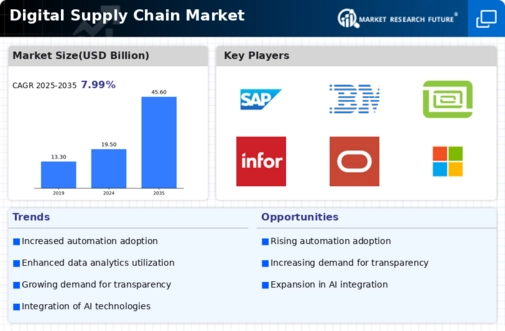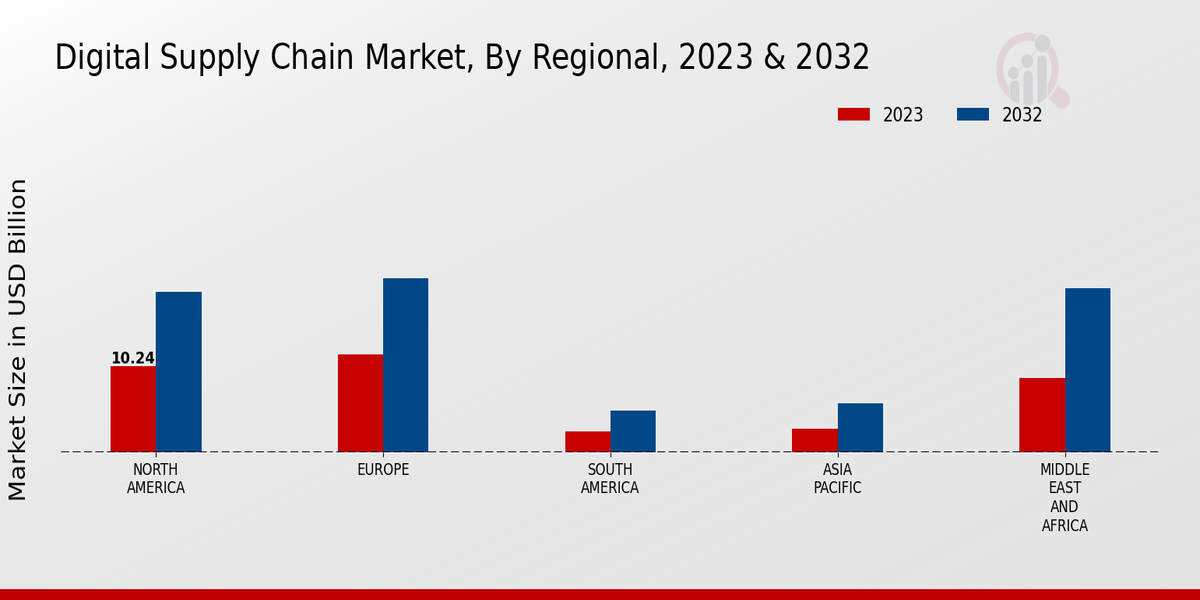E-commerce Growth
The exponential growth of e-commerce is reshaping the Global Digital Supply Chain Market Industry. As online shopping continues to gain traction, businesses are compelled to enhance their supply chain capabilities to meet consumer expectations for speed and reliability. This trend is reflected in the increasing investment in digital logistics solutions, such as automated warehousing and last-mile delivery technologies. The market is projected to reach 19.5 USD Billion in 2024, driven by the need for efficient supply chain operations that can support the demands of the e-commerce sector.
Globalization of Trade
The globalization of trade has a profound impact on the Global Digital Supply Chain Market Industry. As businesses expand their operations internationally, they require sophisticated digital supply chain solutions to manage complex logistics and regulatory requirements. This trend is evident in the increasing reliance on digital platforms that facilitate cross-border transactions and streamline supply chain processes. The market is poised for substantial growth, with a projected compound annual growth rate of 8.05% from 2025 to 2035. Companies that leverage digital tools to navigate global markets are likely to gain a competitive edge.
Market Growth Projections
Sustainability Initiatives
Sustainability is becoming a focal point for organizations within the Global Digital Supply Chain Market Industry. Companies are increasingly adopting sustainable practices to reduce their environmental footprint and meet regulatory requirements. This shift is driving the demand for digital solutions that enable efficient resource management and waste reduction. For example, supply chain optimization tools can help organizations minimize energy consumption and emissions. As sustainability becomes a core business strategy, the market is expected to see significant growth, aligning with the broader global trend towards responsible business practices.
Technological Advancements
The Global Digital Supply Chain Market Industry is experiencing rapid technological advancements that enhance operational efficiency and visibility. Innovations such as artificial intelligence, machine learning, and blockchain are transforming traditional supply chain processes. For instance, AI-driven analytics can optimize inventory management, reducing costs and improving service levels. In 2024, the market is projected to reach 19.5 USD Billion, driven by these technologies. Companies are increasingly adopting these solutions to streamline operations and respond to market demands more effectively, indicating a shift towards more agile supply chain models.
Increased Demand for Transparency
Transparency in supply chains is becoming a critical requirement for businesses and consumers alike. The Global Digital Supply Chain Market Industry is responding to this demand by implementing technologies that provide real-time tracking and traceability of products. This trend is particularly evident in sectors such as food and pharmaceuticals, where safety and compliance are paramount. As organizations strive to build trust with consumers, the market is expected to grow significantly, with projections indicating a rise to 45.6 USD Billion by 2035. Enhanced transparency not only mitigates risks but also fosters stronger customer relationships.














